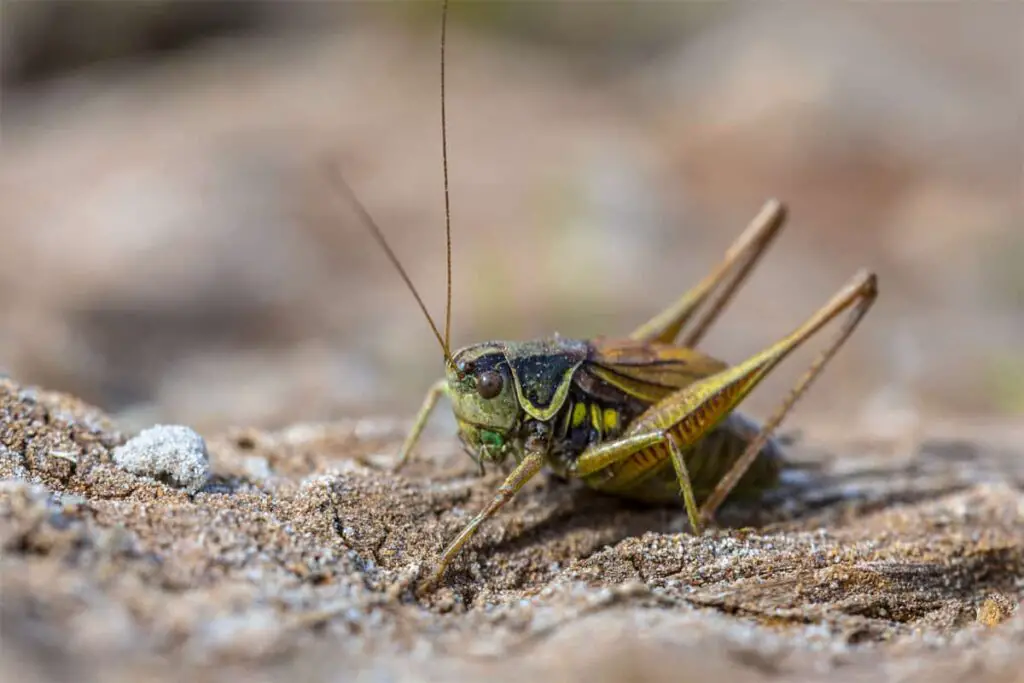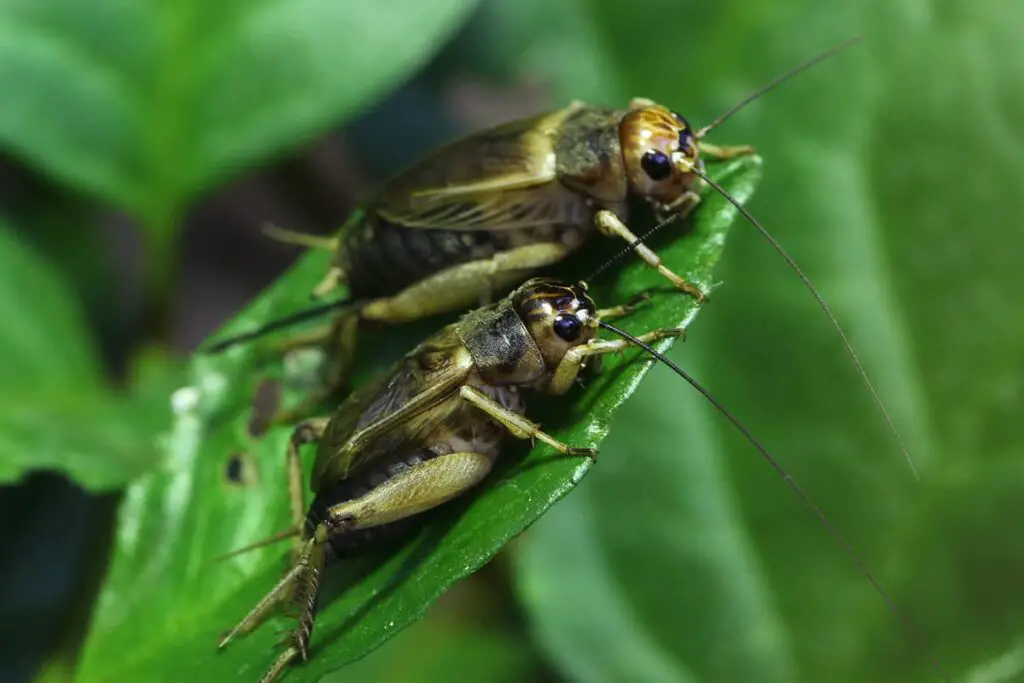
Incubating cricket eggs can be a fascinating endeavor, especially if you’re exploring the world of cricket farming or simply aiming to sustain a ready supply of live feed for pets. Understanding the process to properly incubate cricket eggs is crucial for ensuring a successful hatching. Crickets lay eggs that resemble tiny grains of rice, and with the right temperature and humidity, you can expect them to hatch in about 10 days.
The key to this process lies in replicating the ideal conditions that female crickets seek out in nature to lay their eggs. They generally look for warm and moist soil to deposit their eggs just below the surface. To mimic these conditions, maintaining a temperature around 88°F (31°C) and a high humidity sets up an environment akin to what they would naturally choose. This attention to detail in temperature and humidity will help you achieve a higher hatching rate.
Getting the substrate right is also essential. It must be something that allows female crickets to easily bury their eggs. Providing a good quality substrate with the right texture ensures that the eggs are safe and well-positioned to develop. With these aspects attended to, you’re well on your way to successfully incubating your cricket eggs and witnessing the emergence of tiny crickets, often referred to as pinheads.
Understanding Cricket Eggs
Cricket breeding requires precise knowledge of their reproduction cycle, particularly the eggs. Your success hinges on identifying them correctly and understanding their development.
Identifying Cricket Eggs
Cricket eggs are distinctive and with a keen eye, you can spot them easily. They resemble tiny grains of rice and are often nestled in a moist substrate conducive to their incubation. Females typically lay eggs in clusters, and you can find these in the crevices of the cricket enclosure or within the soil they inhabit.
For optimal egg laying, maintain the soil at around 88°F (31°C) and 100% humidity as these conditions mimic the natural environment that crickets seek for reproduction. Expect to find anywhere from 5 to 10 eggs at a time from one female, which can lay approximately 100 eggs over her lifespan.
Cricket Egg Development Stages
Once the eggs are laid, they undergo several stages before hatching. Initially, cricket eggs will incubate for about 10 to 14 days in perfect conditions. During this time, the eggs progress through identifiable development stages:
- Formation: The egg is fertilized and begins to take shape.
- Incubation: The eggs develop within the warm, humid soil.
- Hatching: Crickets, known as nymphs or pinheads, emerge from the eggs.
- Day 1-3: Formation of the embryo
- Day 4-10: Growth and maturation
- Day 11: Hatching
Each egg yields only one cricket, meaning the quantity of your cricket population is directly tied to the number of successful hatchings. Keep a close eye on the eggs during this period and ensure that conditions remain stable to foster healthy growth and development.
Preparing the Incubation Environment
Creating the ideal incubation environment is crucial for the successful hatching of cricket eggs. You’ll need the right substrate, consistent temperature and humidity, and a suitable container.
Choosing the Right Substrate
To start, you need to select a substrate that retains moisture without becoming too wet. A common choice is peat moss or vermiculite. The substrate should be microwaved before use to sterilize it and then slightly moistened.
Maintaining Temperature and Humidity
Cricket eggs require a specific range of temperature and humidity to hatch. Aim for a temperature between 28-30°C (82-86°F) and a humidity level around 75%-85%. You can use a hygrometer to monitor humidity and an incubator with a thermostat to regulate temperature.
Setting Up the Incubation Container
Finally, choose a container that’s both spacious and has a secure lid to prevent escapes. Provide a gentle ventilation system to allow fresh air circulation. Line the bottom with your chosen substrate and lightly cover the eggs to protect them during incubation.
Incubation Process
Successful incubation of cricket eggs requires attention to detail and careful monitoring. By providing the right conditions and being diligent in your approach, you can maximize the hatch rate and health of your crickets.
Transferring the Eggs
Once your female crickets have laid their eggs, you need to transfer them to a controlled incubation environment. Create a humid substrate like moist soil or sand in a separate container where the temperature can be consistently maintained at 88°F (31°C), ideal for egg incubation. Gently transfer the eggs using a soft brush or a spoon, spacing them out to prevent mold and ensure even heat distribution. Make sure the container has adequate ventilation to prevent excessive moisture buildup which can harm the eggs.
Monitoring the Incubation
Throughout the incubation period, you must closely monitor temperature and humidity levels; these are critical factors for the eggs to hatch successfully. A digital thermometer and hygrometer can ensure accuracy. Keep the soil or substrate consistently moist, but not wet, as overly saturated conditions can be detrimental. Regularly check for signs of mold or fungus, which can indicate that your setup requires adjustments. Incubation typically takes around 10 days, after which you should see the first nymphs (baby crickets) emerging.
Post-Hatching Care
After your cricket eggs have hatched, it’s crucial to provide the right environment and nourishment for your hatchlings. They depend on you for their survival and growth during these initial stages.
Feeding the Hatchlings
Young crickets, also known as nymphs, require a nutrient-rich diet to develop properly. Start by offering fine-ground, high-protein food such as:
- Alfalfa meal
- Commercial cricket feed (finely ground)
- Soft vegetables (e.g., potatoes, carrots)
Remember: Your cricket hatchlings will need continuous access to food as they tend to eat frequently in small amounts.
Managing the Cricket Colony
Habitat: Keep your cricket hatchlings in a clean, warm, and humid environment. They thrive in temperatures around 88°F (31°C) and high humidity levels. Regular habitat maintenance is key to prevent mold and mite infestations.
Separation: As your crickets grow, separate them by size to prevent cannibalism. Using a setup with dividers can facilitate this process.
Ventilation: Ensure there’s adequate airflow within the colony’s habitat to maintain a healthy atmosphere.
Sanitation: Clean the rearing area regularly to keep it free of waste and leftover food, which helps in preventing disease.
Frequently Asked Questions
When it comes to incubating your cricket eggs, you’ll likely have a number of questions regarding the process. The information here is designed to provide precise answers to some of the most common questions, ensuring you have the knowledge needed to successfully hatch and maintain a cricket colony.
What is the optimal temperature for incubating cricket eggs?
The optimal temperature for incubating cricket eggs is typically between 88°F to 90°F (31°C to 32°C). Maintaining this range can help ensure a higher hatch rate and healthier crickets post-hatching.
How can you differentiate between cricket eggs and waste within their habitat?
Cricket eggs are small, oval, and off-white in color, and they are laid in the substrate, whereas cricket waste is usually darker and found on the surface. Careful observation will help you distinguish between the two.
What type of substrate is ideal for laying cricket eggs?
A moist substrate mixture of peat moss or vermiculite combined with topsoil is ideal for laying cricket eggs. The substrate should be loosely packed to allow female crickets to deposit their eggs.
What are the indications that cricket eggs are ready to hatch?
When cricket eggs are close to hatching, they will appear slightly larger and you may notice the embryo within becomes visible. This change usually occurs just days before the eggs hatch.
How often should cricket eggs be moistened during incubation?
Cricket eggs should be moistened gently every few days to prevent dehydration. However, avoid over-wetting, as this can lead to mold growth and harm the eggs.
Which methods are most effective for breeding and maintaining a healthy cricket colony?
To maintain a healthy cricket colony, provide a varied diet, clean habitat, and proper temperature and humidity levels. Regularly breed crickets to ensure genetic diversity. Proper maintenance and breeding techniques are essential.
Driven by a passion for those tiny creatures that rule our world, we at Bug Domain strive to be your go-to resource for information on insects.



